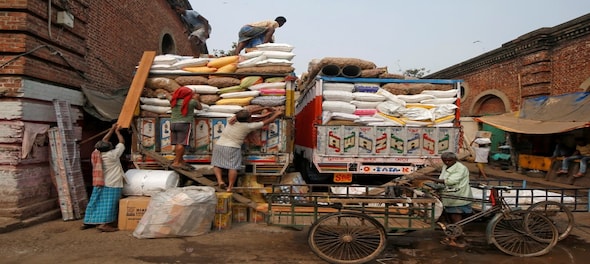
The COVID-19 pandemic has resulted in a nation-wide lockdown and the on-ground situation continues to evolve on an everyday basis. This has severely impacted businesses across sectors. The retail players in India are also facing a major crisis with most of the stores completely shut down. The big question that all retailers are asking today is, what should they be doing now and what are the immediate steps that they should take post-lockdown to return to normalcy?
The supply chain for retailers are certainly at risk of a complete breakdown and they must take immediate steps to ensure a smooth flow of goods to the stores that’s needed the most.
Integrated demand and supply planning:
As per current indications, the lockdown is likely to be lifted in stages and areas which are outside the hotspots are likely to see a return to normalcy faster. Retailers need to reassess the consumer demand based on the outbreak-driven market adjustments (i.e. new demand driven by supply constrictions, reduced demand from regions closing off from market), review supply constraints (i.e., suppliers, transport, warehousing active capacities), create a prioritisation framework and establish a dynamic scenario planning capability.
Smart logistics and distribution capability is imperative for retailers in today’s scenario. They will need to adjust the sources and supply, the size of drops and their frequency. Many retailers operate with distribution centres (DCs) that have been reorganised post-GST for efficiency and they need to quickly assess if these will need some intermediate adjustment in the current scenario.
A major DC in a COVID hotspot could completely disrupt a retailer even if the stores are open for business. This will also necessitate a change in the nature of vehicles and their routes. Many retailers would need to re-plan their logistics to meet the new norms of the business. With the stocks of the spring-summer due in stores for apparel players while those of autumn-winter still unsold will mean a huge pressure on inventory and sell-throughs that will need to be closely monitored. There could be a need for inter-store movements to balance stocks across the stores. All these issues will mean the capability to plan inventory and logistics across stores in a highly dynamic way until the business returns to normalcy. The food and grocery players are better positioned currently but as the demand for non-food items ramps up, they will also have to look at these adjustments for their apparel and general merchandise items.
Omnichannel and delivery based models: Considering that the market would be moving to more omnichannel and delivery based models, many retailers would need to redefine their last-mile delivery. Segments like restaurants and QSRs are better positioned here as they are already used to this model and almost 25-30 percent of the revenues of some players now come through delivery. This will only go up and the concept of dark stores will now become even more pronounced.
Crisis management and governance teams: These teams currently addressing immediate issues will need to be in place to support the supply chain teams until the business comes back to normalcy. They will need to continue to validate the impact of COVID-19 on operations and create a control tower to analyse critical data points and manage swift and informed business decisions
Supply chain leaders: While the retail players focus on overcoming the COVID-19 disruption, the supply chain leaders have a key role to play in identifying the risk areas and then optimising the operating models in a way that mitigates the risk. This is also a time for supply chain leaders to shift their focus towards adopting and integrating disruptive digital capabilities that are needed to reimagine their operations and meet consumer demands for rapid fulfilment.
The emergence of new technologies like artificial intelligence (AI), machine learning (ML), the Internet of Things (IoT) and advanced analytics, when applied to the supply chain, enhances the ability of the decision-makers to make more informed decisions and at the same time save vital costs. These initiatives will need to be fast-tracked now to not only address the immediate aftermath but to make supply chains more resilient
With the COVID-19 outbreak, which is continuously evolving, no one can predict the overall economic impact of this crisis in India or globally. However, it is a reminder to businesses that such an unprecedented crisis can happen anytime and if businesses want to continue to serve their customers during a period of crisis/disruption, they need to be proactive in their planning. Now is the time for retail players to get control of the current crisis and invest in the build-out of a more resilient supply chain and leverage digital technologies. There is a new normal that needs to be addressed.
-Ashish Nanda is Partner and National Leader, Supply Chain Advisory at EY India; and Pinakiranjan Mishra is Partner and National Leader, Consumer Products and Retail, EY India. The views expressed by authors are personal.
First Published: Apr 12, 2020 8:00 AM IST
Check out our in-depth Market Coverage, Business News & get real-time Stock Market Updates on CNBC-TV18. Also, Watch our channels CNBC-TV18, CNBC Awaaz and CNBC Bajar Live on-the-go!


Interview | PM Modi targets Naveen Patnaik and BJD — asks Odisha a chance for BJP
Apr 28, 2024 7:53 PM
PM Modi says great men like Nehru and Ambedkar were against reservation based on religion
Apr 28, 2024 6:41 PM
Exclusive | Congress has turned Bengaluru from 'tech hub to tanker hub': PM Modi
Apr 28, 2024 6:18 PM
Modi Interview | Here's what the Prime Minister said on inheritance tax
Apr 28, 2024 6:05 PM

